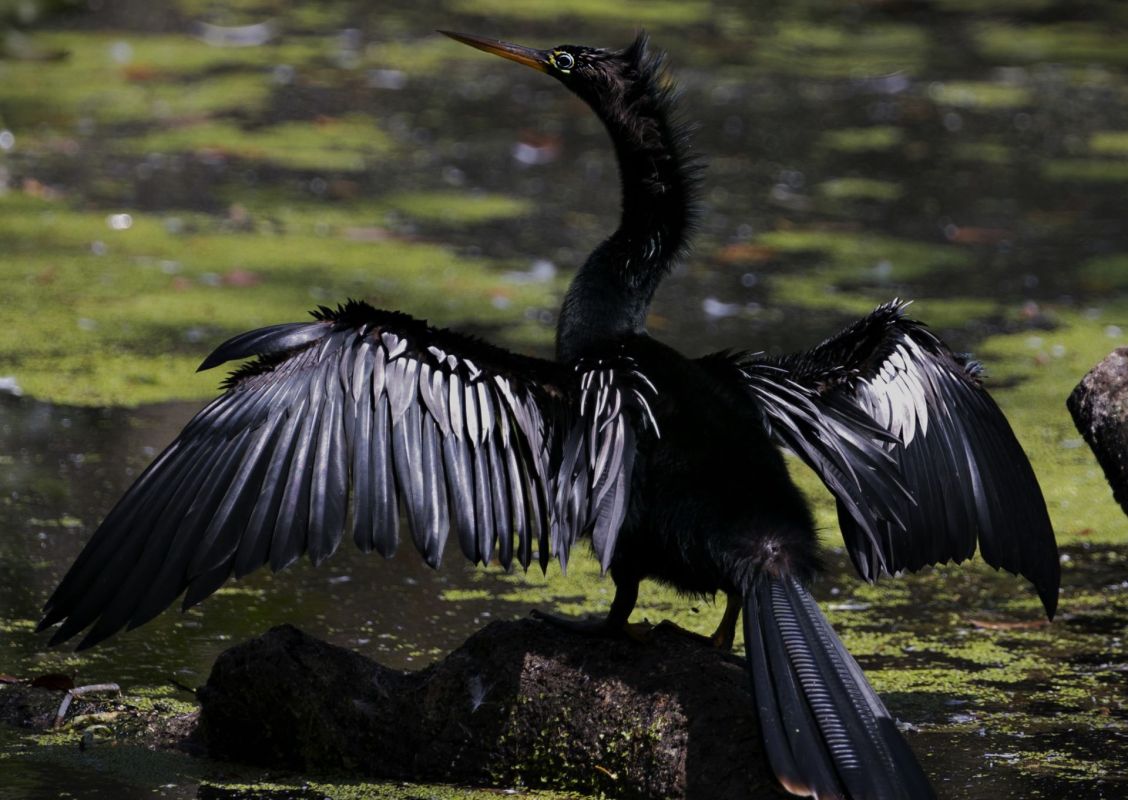Some birdwatchers in New York State are getting a rare treat, as a type of bird that has almost never been seen in the area has suddenly started making appearances. But those appearances may be becoming less rare, and they may not actually be all that much of a treat.
What's happening?
One anhinga, also known as a "devil bird," has been spotted in Brooklyn's Prospect Park, to the delight of New York City's birdwatchers.
The word anhinga, which comes from the Tupi Indians in Brazil, roughly translates to "devil bird" or "evil spirit of the woods," according to AllAboutBirds.com. Anhingas swim partially submerged in water, leaving only their snakelike head visible from the surface.
And while one bird alone doesn't make a trend, another birdwatcher in Rome, New York, 180 miles north of the city, has reported stumbling across a group of 22 Anhingas hanging out together next to a canal.
According to a New York County Birders Twitter account, the Prospect Park anhinga is the first of its kind to be spotted in New York City since 1992.
Experts told the New York Times that the anhingas are venturing outside of their normal migration range due to rising temperatures as a result of the overheating of our planet.
Why is this concerning?
As our planet continues to overheat, due in large part to our usage of dirty energy sources, like coal, oil, and methane gas, animals' habitats and migration patterns are affected, causing a ripple effect throughout various ecosystems.
According to the Audubon Society, "Highly and moderately vulnerable birds may lose more than half of their current range — the geographic area where they live — as they are forced to search for suitable habitat and climate conditions elsewhere."
Additionally, birds being forced into new habitats causes competition for resources among species that previously would never have had to interact.
As fun as it may be to see a new type of bird at your local park, it does not bode well for our planet.
What needs to be done?
"In order to hold warming steady, we must act now to reduce the amount of carbon released into the atmosphere and limit warming to 1.5 degrees," the Audubon Society wrote on its website. "We must reduce our carbon emissions and also absorb what is produced through natural solutions like reforestation or with technology that removes carbon from the air."
The best way we can do this is by shifting our energy reliance away from dirty energy to cleaner, more abundant sources like solar and wind.
Join our free newsletter for cool news and cool tips that make it easy to help yourself while helping the planet.









